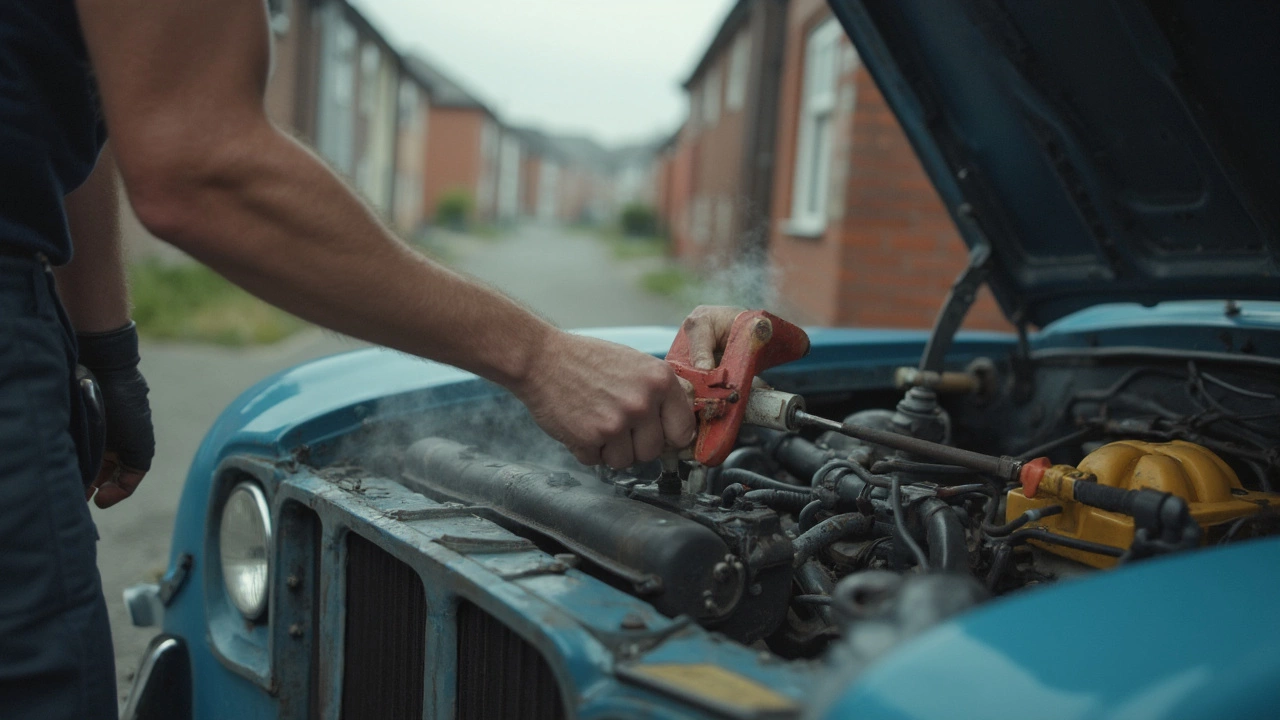Coolant Issues: Spot, Fix & Prevent Car Overheating
If your temperature gauge is creeping toward the red zone, you’re probably dealing with a coolant problem. Coolant isn’t just green liquid – it’s the lifeline that keeps your engine from boiling over. Ignoring a small leak or a low‑level warning can turn a cheap repair into a big engine rebuild.
Common Signs That Your Coolant Is in Trouble
There are a few tell‑tale clues you can’t afford to miss. First, the gauge itself – if it starts rising quickly after you’ve been driving, that’s a red flag. Second, look for steam or a sweet smelling vapor around the radiator or under the car. Third, you might notice a wobble in the steering when the engine gets hot; a failing thermostat can cause pressure spikes that affect the power steering.
Another easy check is the coolant color. Fresh coolant is usually bright green, orange or pink. If it looks rusty, murky, or has oil floating on top, your system is contaminated and needs a flush.
DIY Checks and Simple Fixes
Before you call a mechanic, do a quick visual inspection. Open the hood only when the engine is cool – hot coolant can spray and burn you. Check the radiator cap for cracks or corrosion; a bad cap can let pressure escape and cause boiling.
Next, hunt for leaks. Look under the car after it’s been parked for a night; a puddle of bright green liquid means a leak somewhere in the system. Common leak spots are the radiator hoses, the water pump, and the coolant reservoir. Tightening a loose hose clamp can stop a minor drip.
If the coolant level is low, top it up with the correct type of coolant for your vehicle. Mixing different coolant types can cause gelling, which blocks flow. Always follow the manufacturer’s recommendation – you can find it in your owner’s manual or on the label of the coolant bottle.
For a more thorough fix, a coolant flush removes rust, scale and old coolant. It’s a simple process: drain the old fluid, flush with a water‑to‑coolant flush solution, then refill with fresh coolant. If you’re not comfortable doing this yourself, a quick visit to Northwich Tyres Centre will get it done in under an hour.
Don’t forget the thermostat. If it sticks open, the engine never reaches operating temperature, hurting fuel economy. If it sticks closed, the coolant can’t circulate, leading to overheating. Replacing a thermostat is cheap and usually takes under 30 minutes.
Finally, keep an eye on the radiator fan. A fan that won’t turn on when the engine is hot can cause heat buildup. Check the fan relay and wiring for damage; a simple fuse replacement often solves the problem.
When in doubt, bring your car to Northwich Tyres Centre. Our technicians can pressure‑test the system, pinpoint hidden leaks and perform a professional coolant flush. We’ll also inspect the water pump, radiator and hoses to make sure everything is sealed tight.
Remember, staying ahead of coolant issues saves money and keeps you safe on the road. A quick visual check, topping up low fluid and a regular flush are all you need to keep your engine happy.
 20 April 2025
20 April 2025
Can You Fix a Radiator Without Replacing It? Real Solutions for Car Troubles
Ever wondered if you can fix a leaky or clogged radiator without shelling out cash for a new one? This article walks you through practical ways to save your car’s radiator using real-world fixes. We’ll talk about common issues, actual repair options, and when it’s worth trying a repair at home. You’ll get clear tips, warning signs to watch out for, and advice on when to call in the pros. No fluff—just honest info that could save you time and money.
Latest Posts
-

Windscreen Wiper or Windshield Wiper? The Real Difference Explained
-

Essential Car Tuning: Post-Exhaust Upgrade Insights
-

Can You Drive With a Bent Suspension? Dangers, Signs, and Real Fixes
-

How Long Does a Clutch Last After You Smell It Burn? Real-World Lifespan and Advice
-

Buying a Car Battery: Smart Tips for the Best Price

0